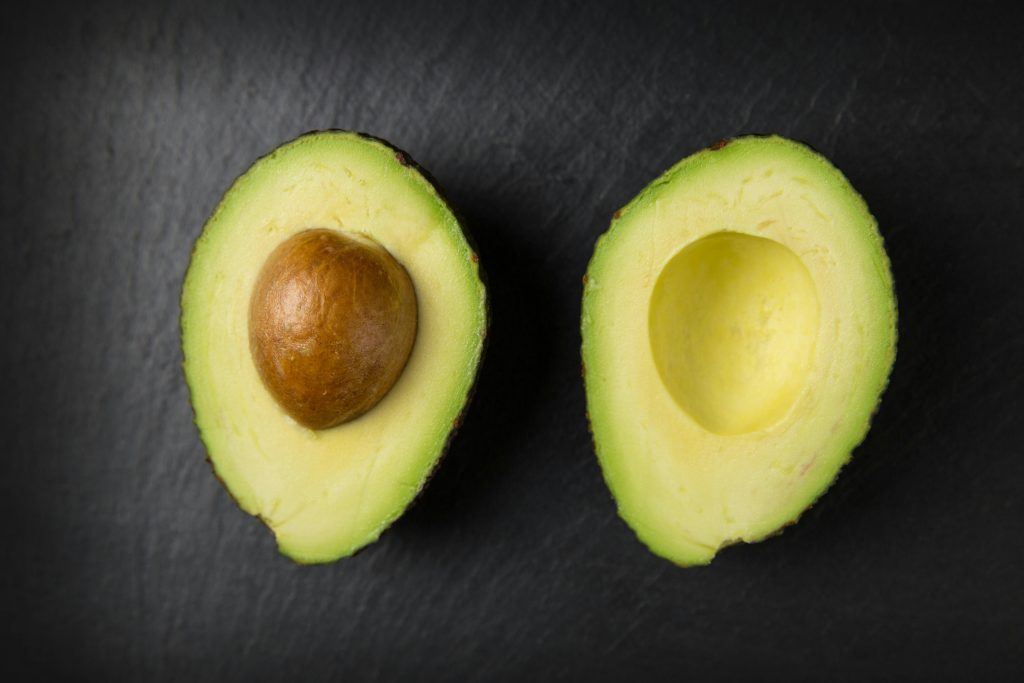Food Low Glycemic: Your Ultimate Guide to Smart Eating for Optimal Blood Sugar Control

Food Low Glycemic: Your Ultimate Guide to Smart Eating for Optimal Blood Sugar Control.
Living with unstable blood sugar levels can feel like an overwhelming roller coaster ride that never stops. One moment you’re energetic and focused, the next you’re experiencing fatigue, irritability, or those dreaded sugar cravings that seem impossible to control. If you’ve been searching for sustainable ways to manage your blood glucose naturally through nutrition, you’ve discovered the right path forward. The secret lies in understanding how food low glycemic choices can transform your health journey from frustrating unpredictability to empowered wellness.
The glycemic index revolution isn’t just another dietary trend—it’s a scientifically-backed approach that millions of people worldwide use to regain control over their metabolic health. Whether you’re managing diabetes, prediabetes, or simply want to optimize your energy levels throughout the day, mastering the art of low glycemic eating will become your most powerful tool for long-term health success.

Understanding the Glycemic Index: Your Blood Sugar Blueprint
The glycemic index (GI) measures how quickly carbohydrate-containing foods boost blood sugar levels. Low GI foods cause a slower, gradual rise in blood sugar, while high GI foods trigger a rapid increase. The GI scale ranges from 0 to 100, with 100 being pure glucose.
When you consume high glycemic foods, your blood sugar spikes rapidly, forcing your pancreas to release large amounts of insulin to bring glucose levels back down. This process creates what many describe as the “blood sugar roller coaster”—the inevitable crash that follows the initial energy spike, leaving you feeling tired, hungry, and craving more food.
Conversely, food low glycemic options provide sustained energy release, keeping your blood sugar levels stable throughout the day. This stability translates into consistent energy, better mood regulation, improved concentration, and reduced cravings for sugary snacks.
The Science Behind Low Glycemic Living
Research consistently demonstrates that incorporating food low glycemic selections into your daily routine offers remarkable health benefits. Studies have shown that the low GI diet may result in weight loss, reduce blood sugar levels, and lower the risk of heart disease and type 2 diabetes.
The mechanism behind these benefits is elegant in its simplicity. Foods on the low end of this range, such as many beans and fruits, are digested slowly and cause blood sugar levels to rise gradually. Those with a high glycemic index (GI) are quickly digested and absorbed, leading to larger spikes in blood sugar.
This controlled release pattern helps your body maintain metabolic equilibrium, reducing stress on your pancreas and supporting overall hormonal balance. For individuals managing diabetes, this approach can significantly improve HbA1c levels and reduce the need for medication adjustments.
Essential Low Glycemic Foods for Daily Nutrition
Power-Packed Vegetables and Greens
Non-starchy vegetables form the foundation of any successful low glycemic eating plan. Examples of low GI foods include foods like berries, oranges, and apples, legumes like black beans and chickpeas, whole grains, and non-starchy vegetables, such as green beans or cauliflower.
Leafy greens like spinach, kale, and arugula contain virtually no carbohydrates, making them perfect food low glycemic choices. Cruciferous vegetables including broccoli, Brussels sprouts, and cauliflower provide essential nutrients while maintaining stable blood sugar levels. Bell peppers, zucchini, asparagus, and cucumber offer versatility in meal preparation while supporting your glycemic goals.
Protein-Rich Options for Sustained Energy
Foods such as oils, fats, and meats do not have a GI, though in people with diabetes, they can affect the blood sugar. Lean proteins like chicken breast, turkey, fish, and plant-based options such as tofu and tempeh provide essential amino acids without directly impacting blood glucose levels.
Incorporating adequate protein with each meal helps slow the absorption of carbohydrates, further supporting blood sugar stability. This protein-carbohydrate combination strategy maximizes the benefits of food low glycemic meal planning.
Fiber-Rich Legumes and Whole Grains
Beans, lentils, and chickpeas represent some of the most valuable food low glycemic options available. Their high fiber content and plant-based protein create a perfect storm for blood sugar control. Low GI foods include whole grains, legumes, fruits and vegetables as well as dairy products like milk and yogurt which all contain fiber or fat that slow digestion time making them more slowly absorbed by the body than high-GI items like white breads or sugary snacks.
When selecting grains, choose steel-cut oats over instant varieties, quinoa over white rice, and sprouted grain breads over processed alternatives. For example, one study of instant oatmeal shows that it had a glycemic index of 79, which is in the high range. Yet steel-cut rolled oats have a glycemic index of 55, which puts it in a low glycemic index.
Fruits: Nature’s Sweet Low Glycemic Treats
Many fruits qualify as excellent food low glycemic choices when consumed in appropriate portions. Berries top the list with blueberries, strawberries, and raspberries offering powerful antioxidants alongside stable blood sugar support. Apples, pears, and citrus fruits provide essential vitamins while maintaining low to moderate glycemic values.
The key to incorporating fruits successfully lies in understanding portion control and timing. Consuming fruits with protein or healthy fats further reduces their glycemic impact, making them ideal components of balanced meals and snacks.
Creating Your Low Glycemic Meal Plan
Breakfast: Starting Your Day Right
Transform your morning routine by building meals around food low glycemic principles. Begin with a foundation of protein such as eggs or Greek yogurt, add fiber-rich vegetables like spinach or tomatoes, and include a small portion of low glycemic carbohydrates such as steel-cut oats or sprouted grain toast.
A powerful breakfast combination might include a vegetable omelet with spinach and mushrooms, a small serving of steel-cut oats topped with cinnamon and a few berries, and a glass of unsweetened almond milk. This meal provides sustained energy for hours without causing blood sugar spikes.
Lunch: Midday Energy Maintenance
Lunch presents an excellent opportunity to incorporate diverse food low glycemic options while preventing the afternoon energy crash. Focus on building meals around lean proteins, abundant vegetables, and complex carbohydrates that support stable blood sugar levels.
Consider preparing a large salad with mixed greens, grilled chicken or salmon, chickpeas, avocado, and a variety of colorful vegetables. Dress with olive oil and vinegar for healthy fats that further slow carbohydrate absorption. Pair with a small portion of quinoa or brown rice for sustained energy.
Dinner: Evening Satisfaction
Evening meals should emphasize food low glycemic choices that support overnight blood sugar stability. Prioritize vegetables, lean proteins, and moderate portions of complex carbohydrates to prevent nighttime glucose fluctuations that can disrupt sleep quality.
A perfect dinner might feature baked salmon with roasted vegetables including broccoli, bell peppers, and zucchini, served alongside a small portion of wild rice or quinoa. This combination provides essential nutrients while supporting stable blood glucose levels throughout the night.
Smart Snacking Strategies
Between-Meal Blood Sugar Control
Strategic snacking using food low glycemic options prevents blood sugar dips that trigger cravings and overeating. The key lies in combining protein, healthy fats, and fiber-rich carbohydrates in appropriate portions.
Excellent snack combinations include apple slices with almond butter, Greek yogurt with berries and nuts, or hummus with raw vegetables. These combinations provide sustained energy while supporting stable blood glucose levels between meals.
Emergency Snack Preparation
Preparing portable food low glycemic snacks ensures you always have healthy options available when hunger strikes. Keep nuts, seeds, and low-sugar protein bars in your car, office, and gym bag. Having these options readily available prevents impulsive food choices that can derail your blood sugar management efforts.

The Role of Continuous Glucose Monitoring
Revolutionary Blood Sugar Tracking
Recent advances in continuous glucose monitoring technology have transformed how people manage their blood sugar levels. The Stelo Glucose Biosensor System uses a wearable sensor, paired with an application installed on a user’s smartphone or other smart device, to continuously measure, record, analyze and display glucose values in people 18 years and older that are not on insulin and who do not have problematic hypoglycemia.
“It has revolutionized their and their families’ lives,” says Elizabeth Selvin, who researches diabetes at Johns Hopkins University. But in March 2024, the Food and Drug Administration approved the first continuous glucose monitors for people without diabetes.
Understanding Your Personal Response
Continuous glucose monitors (CGMs) allow you to watch how certain foods affect your blood sugar levels. They help regulate glucose values during the night, slowing down insulin delivery if your blood sugar drops. You can also see when your glucose level rises in a 24-hour period and adjust your eating patterns accordingly.
This real-time feedback transforms your relationship with food low glycemic choices from theoretical knowledge into practical, personalized insights. You can observe exactly how different foods affect your individual blood sugar response and make informed decisions about your meal planning.
Recommended CGM Option: FreeStyle Libre 3
For individuals serious about optimizing their blood sugar control through food low glycemic eating, the FreeStyle Libre 3 system available on Amazon represents an excellent investment in your health journey. This FDA-approved continuous glucose monitor provides real-time glucose readings without the need for fingerstick testing, allowing you to track your body’s response to different foods throughout the day.
The FreeStyle Libre 3 offers 14 days of continuous monitoring with each sensor, smartphone connectivity for easy data tracking, and customizable glucose alerts to help you maintain optimal blood sugar levels. By combining this advanced monitoring technology with your food low glycemic meal planning, you can achieve unprecedented control over your metabolic health.
Advanced Strategies for Glycemic Success
Timing and Food Combinations
The timing of your meals and the specific combinations of food low glycemic choices can significantly impact your blood sugar response. Eating regular, balanced meals every 3-4 hours prevents blood sugar dips that trigger cravings and overeating.
Combining macronutrients strategically enhances the blood sugar benefits of low glycemic foods. Adding protein or healthy fats to any carbohydrate-containing meal slows digestion and reduces the overall glycemic impact. This principle applies even when consuming moderate glycemic foods, allowing for greater flexibility in your meal planning.
Exercise and Blood Sugar Synergy
Physical activity serves as a powerful complement to food low glycemic eating strategies. Regular exercise increases your body’s insulin sensitivity, making your cells more efficient at utilizing glucose for energy. This improved efficiency means better blood sugar control even when consuming moderate glycemic foods.
Post-meal walks represent one of the most effective strategies for blunting blood sugar spikes. A gentle 10-15 minute walk after eating can significantly reduce the glycemic impact of your meal, making it an excellent addition to your blood sugar management toolkit.
Stress Management and Sleep Quality
Chronic stress and poor sleep quality can sabotage even the most carefully planned food low glycemic eating strategy. Both factors increase cortisol production, which raises blood sugar levels and increases insulin resistance.
Implementing stress reduction techniques such as meditation, deep breathing, or yoga supports your blood sugar management goals. Similarly, prioritizing 7-9 hours of quality sleep each night helps maintain optimal insulin sensitivity and glucose metabolism.
Overcoming Common Challenges
Social Eating Situations
Navigating social situations while maintaining your food low glycemic lifestyle requires preparation and flexibility. Research restaurant menus in advance, focusing on protein and vegetable-based dishes. Don’t hesitate to request modifications such as substituting vegetables for high glycemic starches.
When attending parties or gatherings, consider eating a small food low glycemic snack before arriving to prevent overeating high glycemic options. Bringing a healthy dish to share ensures you’ll have at least one blood sugar-friendly option available.
Managing Cravings and Emotional Eating
Sugar cravings often intensify when transitioning to a food low glycemic eating pattern. Understanding that these cravings are temporary and will diminish as your blood sugar stabilizes can help you stay committed to your goals.
Emotional eating presents another challenge that requires addressing the underlying triggers rather than simply restricting foods. Developing alternative coping strategies such as calling a friend, taking a walk, or practicing deep breathing can help you navigate difficult emotions without compromising your blood sugar management.
Budget-Friendly Low Glycemic Shopping
Eating food low glycemic doesn’t require expensive specialty products or supplements. Focus on whole, minimally processed foods such as dried beans, lentils, frozen vegetables, and seasonal produce. These affordable options form the foundation of effective blood sugar management.
Batch cooking and meal preparation can significantly reduce costs while ensuring you always have blood sugar-friendly options available. Preparing large quantities of soups, stews, and grain bowls on weekends provides convenient food low glycemic meals throughout the week.
Long-Term Success and Lifestyle Integration
Building Sustainable Habits
Successful food low glycemic eating requires gradual implementation rather than dramatic overnight changes. Start by making one or two small modifications each week, such as switching from white rice to quinoa or adding vegetables to your breakfast routine.
Focus on progress rather than perfection, celebrating small victories along your journey. Each healthy choice reinforces your commitment to better blood sugar control and moves you closer to your long-term health goals.
Monitoring and Adjusting Your Approach
Regular monitoring of your blood sugar response to different food low glycemic choices allows you to refine your eating strategy over time. Keep a food and glucose log, noting which foods and meal combinations provide the best blood sugar stability.
Remember that your optimal eating pattern may differ from generic recommendations. Some individuals may tolerate moderate glycemic foods well when combined with protein and fiber, while others may need to focus more strictly on low glycemic options. The key lies in finding what works best for your unique physiology and lifestyle.

Conclusion: Your Path to Blood Sugar Mastery
Mastering food low glycemic eating represents far more than following another dietary trend—it’s about reclaiming control over your health and energy levels. By understanding how different foods affect your blood sugar and implementing the strategies outlined in this comprehensive guide, you’re taking the first steps toward a more vibrant, energetic future.
The journey to optimal blood sugar control through food low glycemic choices requires patience, consistency, and self-compassion. There will be challenging days and setbacks, but each healthy choice you make strengthens your commitment to long-term wellness. Remember that sustainable change happens gradually, and every small improvement contributes to significant long-term health benefits.
The combination of scientifically-backed food low glycemic eating strategies, advanced monitoring technology like the FreeStyle Libre 3 system, and consistent lifestyle modifications creates a powerful foundation for lasting blood sugar control. By implementing these approaches systematically and adjusting them to fit your unique needs, you’re not just managing a health condition—you’re optimizing your entire quality of life.
Your future self will thank you for the commitment you make today to understanding and implementing food low glycemic principles. The energy stability, improved mood, better sleep quality, and enhanced overall health that result from this approach represent investments that will pay dividends for years to come. Take the first step today, and begin your transformation toward optimal metabolic health through the power of smart, informed eating choices.


One thought on “Food Low Glycemic: Your Ultimate Guide to Smart Eating for Optimal Blood Sugar Control”
Comments are closed.